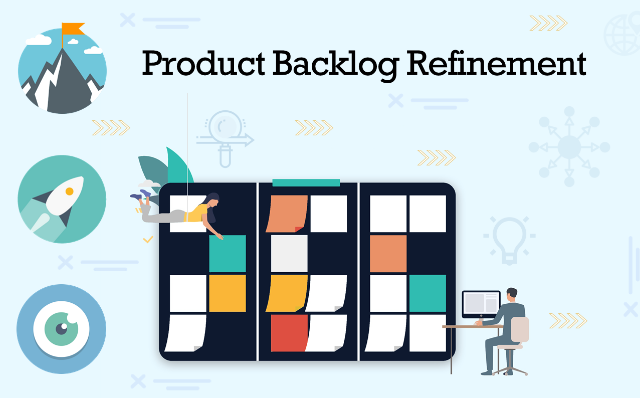Overview
In Scrum-based agile transformations, Product Backlog Refinement meetings, although not officially designated as one of the five Scrum events, hold a crucial place in determining the success of sprints. While the 2020 Scrum Guide briefly mentions Product Backlog Refinement as a continuous activity—defining, decomposing, and clarifying backlog items (see Scrum Alliance’s detailed explanation)—teams should recognize the significant impact these refinement sessions have in practice.

To support your refinement process, we’ve compiled practical best practices you can adapt and tailor according to your team’s unique circumstances.
Part 1: Key Conceptual Clarifications
Before diving into the practicalities, let’s align on what Product Backlog Refinement is—and what it isn’t.
Product Backlog Refinement is:
- A collaborative effort by the Product Owner (PO) and team members to refine, clarify, estimate, and prioritize backlog items in preparation for the next sprint.
- Intended to increase the efficiency of the subsequent Sprint Planning meeting.
- A crucial opportunity for the Scrum Team to collaborate and take shared responsibility for sprint success.
Product Backlog Refinement is NOT:
- A status update meeting where the PO reports progress on writing or developing backlog items.
- A requirements debate session where the team and PO endlessly discuss the validity or details of requirements.
- A task breakdown or technical implementation meeting where requirements are turned into low-level tasks or technical solutions.
- A formal handoff meeting where the PO officially hands over backlog items to the development team.
Part 2: Operational Guidelines for Product Backlog Refinement
A standardized set of operating guidelines can streamline Product Backlog Refinement meetings across your organization. Here’s an example for reference, though teams should adapt it according to their context and needs:
Part 3: Preparation Before Refinement Meetings
Effective backlog refinement requires thorough preparation by the PO, supported by the Scrum Master and team members. Here’s a practical preparation checklist:
Recommended Entry Criteria for Refinement Meetings:
To ensure efficiency, consider verifying these criteria before starting:
- All backlog items clearly documented in JIRA (not personal Excel files).
- Each backlog item includes requester information, detailed description, and acceptance criteria.
- Preliminary estimation and prioritization are completed (ideal item size: ≤ 3 person-days).
- Proposed backlog scope aligns with team’s available capacity.
- Clear sprint goals outlined (beyond merely listing features).
- Visualization tools (User Personas, User Journey Maps, Empathy Maps, Flowcharts, Data-flow diagrams) are prepared and shared.
- Relevant examples or cases are ready and communicated to the team in advance.
Part 4: Managing the Refinement Meeting
Efficient meeting facilitation ensures productive backlog refinement. Consider the following proven practices:
- Team-led Clarification (“Reverse Explanation”):
Allow team members, not just the PO, to explain backlog items, with the PO confirming accuracy and understanding, thus reinforcing mutual alignment.
- Visual Communication:
Use whiteboards or digital visuals to illustrate complex processes, algorithms, or concepts.
- Action Items Documentation:
Capture action items clearly during the meeting (avoid relying solely on memory).
- Engage Everyone:
Ensure active participation from all team members. Actively involve quiet participants to confirm full team alignment.
- Limit Discussion for Non-priority Items:
Limit discussions on items that will not be included in the upcoming sprint to a maximum of five minutes each to avoid wasting time.
- Establish Clear Acceptance Criteria:
Every backlog item discussed should have preliminary acceptance criteria agreed upon by development and testing teams.
Part 5: Practical Refinement Techniques
The following techniques enhance effectiveness and engagement in backlog refinement sessions:
- 15/5 Principle:
Discuss each backlog item for no longer than 15 minutes. If unresolved after 15 minutes, document open questions and let the PO address them separately. Limit new or follow-up items to five minutes each.
- 5/3 Rule:
Decompose backlog items into sizes ranging between 0.5 and 3 person-days. If a backlog item can’t be decomposed, revisit your understanding of it.
- Reserve Time Explicitly:
Allocate approximately 5–10% of each sprint explicitly for backlog refinement activities, ensuring refinement becomes a natural and expected activity rather than an ad hoc event.
- Multiple Short Sessions:
Consider holding multiple shorter refinement sessions (e.g., two 50-minute meetings) rather than a single extended meeting. Strictly adhere to time-boxes to keep sessions focused.
- Pre-meeting Questions:
Distribute the meeting agenda and backlog items in advance. Require each participant to come prepared with at least three questions or explanations to enhance engagement.
Part 6: Common Questions & Clarifications
Q1: “The PO owns the backlog. Why not let the PO refine items independently and simply brief the team?”
Though the PO leads backlog refinement, Scrum teams must collectively align their understanding. Individual team members’ insights improve clarity, consistency, and alignment, enhancing sprint outcomes.
Q2: “To what level should backlog items be refined?”
Backlog refinement primarily facilitates early and collaborative discussion rather than comprehensive documentation. The PO’s detailed preparation is vital for informed conversations and swift decision-making during refinement.
Conclusion
These practices are guidelines rather than rigid standards. Continuously tailor and improve your team’s refinement process based on your specific experiences and contexts. Agile refinement is about relentless improvement—so reflect, adjust, and keep refining your approach.
For insights into Scrum Enterprise refinement practices, check out our SEM course series.